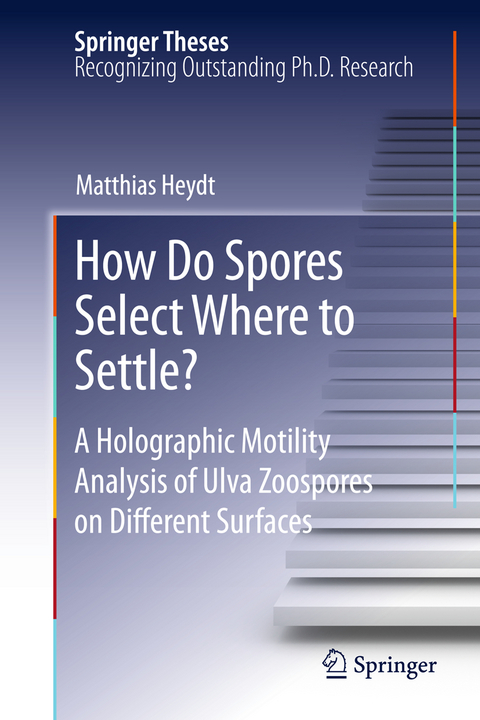
How Do Spores Select Where to Settle?
A Holographic Motility Analysis of Ulva Zoospores on Different Surfaces
Seiten
2014
|
2011
Springer Berlin (Verlag)
978-3-642-26724-6 (ISBN)
Springer Berlin (Verlag)
978-3-642-26724-6 (ISBN)
Using digital in-line holography for the first time, this thesis has been nominated for a Springer prize and achieves a complete three-dimensional and real-time motion analysis of Ulva zoospores, both in solution and in the vicinity of different surfaces.
In this thesis, Matthias Heydt applies digital in-line holography to achieve for the first time a complete three dimensional and real time motion analysis of Ulva zoospores, both in solution and in the vicinity of different surfaces. These results provide previously unknown information about the behavior and mechanism spores use to select a suitable site for settlement. This work gives deeper insight into biofouling algae and stimulates new design strategies for antifouling coatings. Furthermore, the tracking system developed during this research could be used as a new system for assessing the antifouling performance on different surfaces at very early points in time, allowing disentanglement of surface conditioning and interaction of spores with pristine chemistries.
In this thesis, Matthias Heydt applies digital in-line holography to achieve for the first time a complete three dimensional and real time motion analysis of Ulva zoospores, both in solution and in the vicinity of different surfaces. These results provide previously unknown information about the behavior and mechanism spores use to select a suitable site for settlement. This work gives deeper insight into biofouling algae and stimulates new design strategies for antifouling coatings. Furthermore, the tracking system developed during this research could be used as a new system for assessing the antifouling performance on different surfaces at very early points in time, allowing disentanglement of surface conditioning and interaction of spores with pristine chemistries.
Introduction.- Theory of Holography.- State of the Art.- Experimental details.- Results: Motility and exploration behavior of Ulva zoospores.- Discussion of the motility of Ulva zoospores in vicinity to surfaces.- Conclusion and Outlook.- Acknowledgement.- Appendix.
| Erscheint lt. Verlag | 12.10.2014 |
|---|---|
| Reihe/Serie | Springer Theses |
| Zusatzinfo | XVIII, 178 p. |
| Verlagsort | Berlin |
| Sprache | englisch |
| Maße | 155 x 235 mm |
| Gewicht | 308 g |
| Themenwelt | Naturwissenschaften ► Biologie ► Mikrobiologie / Immunologie |
| Naturwissenschaften ► Biologie ► Ökologie / Naturschutz | |
| Naturwissenschaften ► Chemie ► Analytische Chemie | |
| Naturwissenschaften ► Chemie ► Physikalische Chemie | |
| Technik ► Umwelttechnik / Biotechnologie | |
| Schlagworte | 3D swimming pattern analysis • antifouling coatings • biofouling algae • digital inline-holography • exploration behaviour • motility analysis of Ulva spores • particle tracking • settlement site selection |
| ISBN-10 | 3-642-26724-6 / 3642267246 |
| ISBN-13 | 978-3-642-26724-6 / 9783642267246 |
| Zustand | Neuware |
| Haben Sie eine Frage zum Produkt? |
Mehr entdecken
aus dem Bereich
aus dem Bereich
Allgemeine Grundlagen und spezielle Anwendungen
Buch | Softcover (2021)
Springer Berlin (Verlag)
54,99 €


